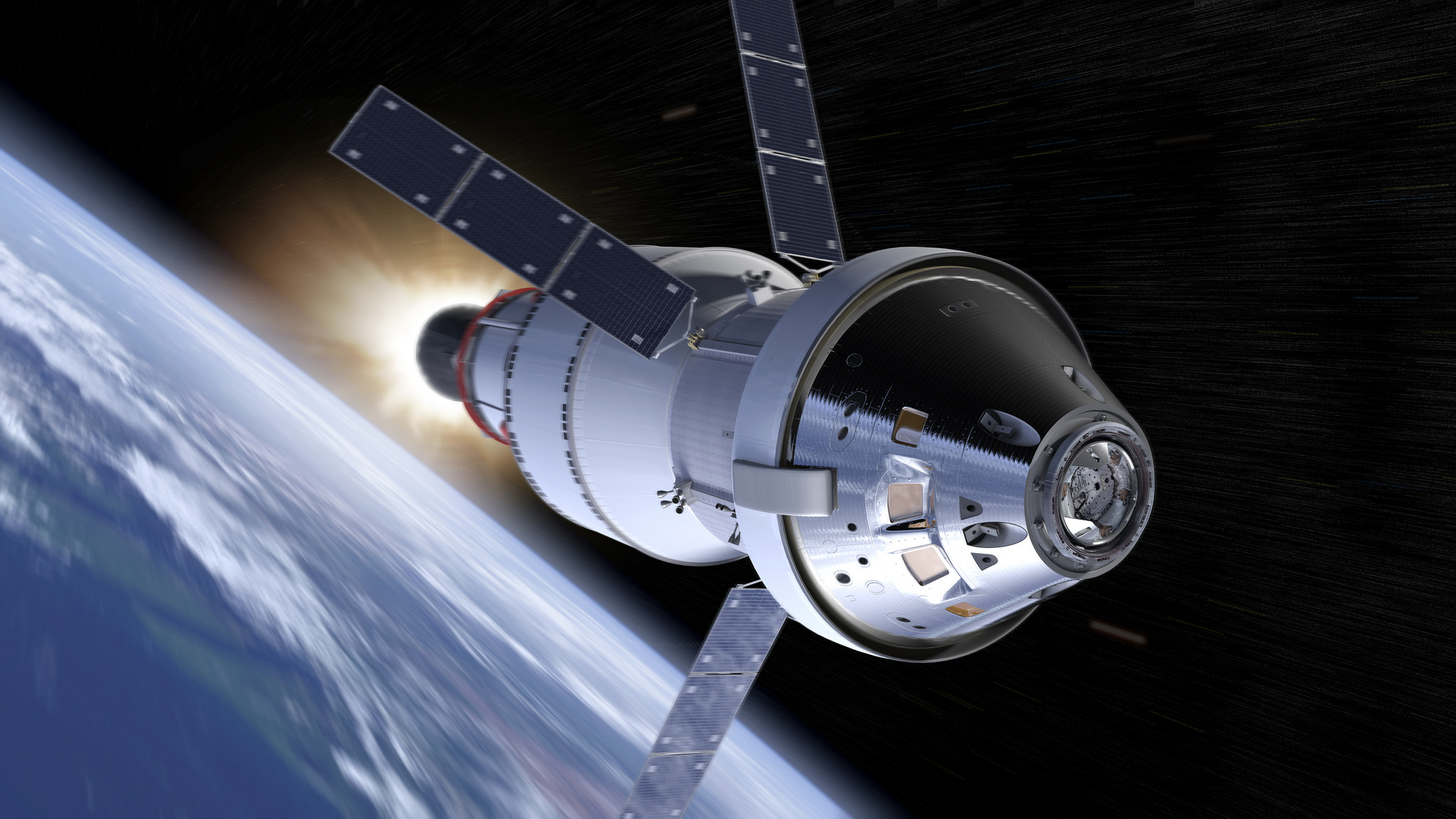
NASA's inspector general raises questions with cost management of Orion spacecraft
The OIG found that Orion has continued to experience cost increases and schedule delays.

NASA's Office of Inspector General (OIG) released a report yesterday (July 16) scrutinizing the management of the agency's Orion Multi-Purpose Crew Vehicle Program.
Among the findings, the OIG determined that Orion — the next-gen capsule that will carry NASA astronauts to the moon and other deep-space destinations — has continued to experience cost increases and schedule delays.
Since the cost and schedule baseline was set in 2015, the program has experienced over $900 million in cost growth through 2019, a figure expected to rise to at least $1.4 billion through 2023, the report concluded.
Related: The Orion space capsule: NASA's next spaceship (photos)
Since 2006, NASA has been developing Orion to transport astronauts beyond low-Earth orbit, with aerospace company Lockheed Martin as the capsule's prime contractor. The near-term focus for Orion is the moon; NASA aims to land two astronauts near the lunar south pole in 2024, as part of its ambitious Artemis program.
Orion has flown three test flights to date, including one to Earth orbit, but none have had astronauts on board. The huge rocket that will launch Orion on its Artemis missions, the Space Launch System, has yet to fly at all. Orion and SLS are scheduled to fly together for the first time in late 2021, on a test mission that will send an uncrewed Orion around the moon.
The OIG report also found that NASA's exclusion of more than $17 billion in Orion-related costs has hindered the overall transparency of the vehicle's complete costs. Both federal law and NASA policy call for a life-cycle cost estimate for all major science and space programs costing more than $250 million, and for the "Agency Baseline Commitment" to be based on all formulation and development costs.
Get the Space.com Newsletter
Breaking space news, the latest updates on rocket launches, skywatching events and more!
"The Orion Program received approval from the NASA associate administrator to deviate from those requirements, resulting in exclusion of $17.5 billion in Orion-related costs from fiscal year (FY) 2006 to FY 2030 due to the agency’s tailored approach to program management and cost reporting," the report states.
"Although these exclusions have been approved, the tailoring of these cost-reporting requirements significantly limits visibility into the total amount spent on development and production efforts," it adds.
You can read the full OIG report here.
Leonard David is the author of "Moon Rush: The New Space Race," which was published by National Geographic in May 2019. A longtime writer for Space.com, David has been reporting on the space industry for more than five decades. Follow us on Twitter @Spacedotcom or Facebook. This version of the story published on Space.com.
Join our Space Forums to keep talking space on the latest missions, night sky and more! And if you have a news tip, correction or comment, let us know at: community@space.com.

Leonard David is an award-winning space journalist who has been reporting on space activities for more than 50 years. Currently writing as Space.com's Space Insider Columnist among his other projects, Leonard has authored numerous books on space exploration, Mars missions and more, with his latest being "Moon Rush: The New Space Race" published in 2019 by National Geographic. He also wrote "Mars: Our Future on the Red Planet" released in 2016 by National Geographic. Leonard has served as a correspondent for SpaceNews, Scientific American and Aerospace America for the AIAA. He has received many awards, including the first Ordway Award for Sustained Excellence in Spaceflight History in 2015 at the AAS Wernher von Braun Memorial Symposium. You can find out Leonard's latest project at his website and on Twitter.
-
Bruzote Well OF COURSE there are cost overruns, and they ARE expected to be tolerated as part of the deal of selecting Lockheed Martin for the prime contractor. If you don't think the well-established boys club of Lockheed and Boeing are not going to get a rich payment for overruns, just look at how special those companies are. When NASA decided to fund companies developing a system to replace the shuttle, they paid Boeing far more than SpaceX to accomplish the same thing. In fact, they should have paid a newcomer like SpaceX more to ensure a non-entrenched company could survive. Of course that didn't happen, and US taxpayers dollars were pumped into Boeing....just because it is a deeply-entrenched part of the military-industrial complex. The same goes for Lockheed-Martin.. Those two goliaths know how to spread their work in each of the 50 states and to get Congress to support them. None of this is a surprise - it is EXPECTED. The tolerance of this is payback for donations to Congress and "creating jobs" (using someone else's money!) in the various Congressional districts.Reply -
Tishers NASA is a mechanism to provide corporate welfare to Boeing and Lockheed Martin. It has been decades since either company has had their feet held to the fire to come in on the deliverables, cost or schedule.Reply
At some places you could say it is the incompetence of project management, but with these two companies it is a core part of their business strategy to double or triple the cost of a project to steal a few more billion dollars each year.
The upstarts (SpaceX, Bigelow, Sierra-Nevada) end up playing by the rules and delivering excellent results. But they do not have a ton of senators and congressmen from powerful districts to jam through favorable legislation. Maybe its time to dump Boeing and Lockeed-Martin.









